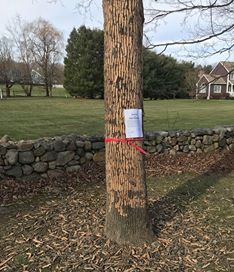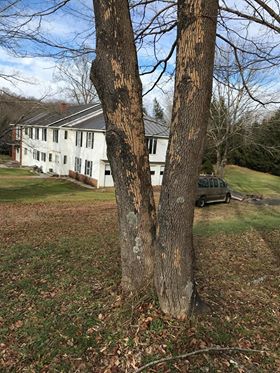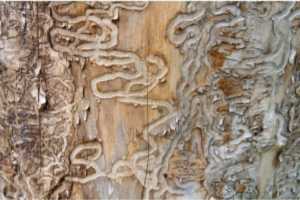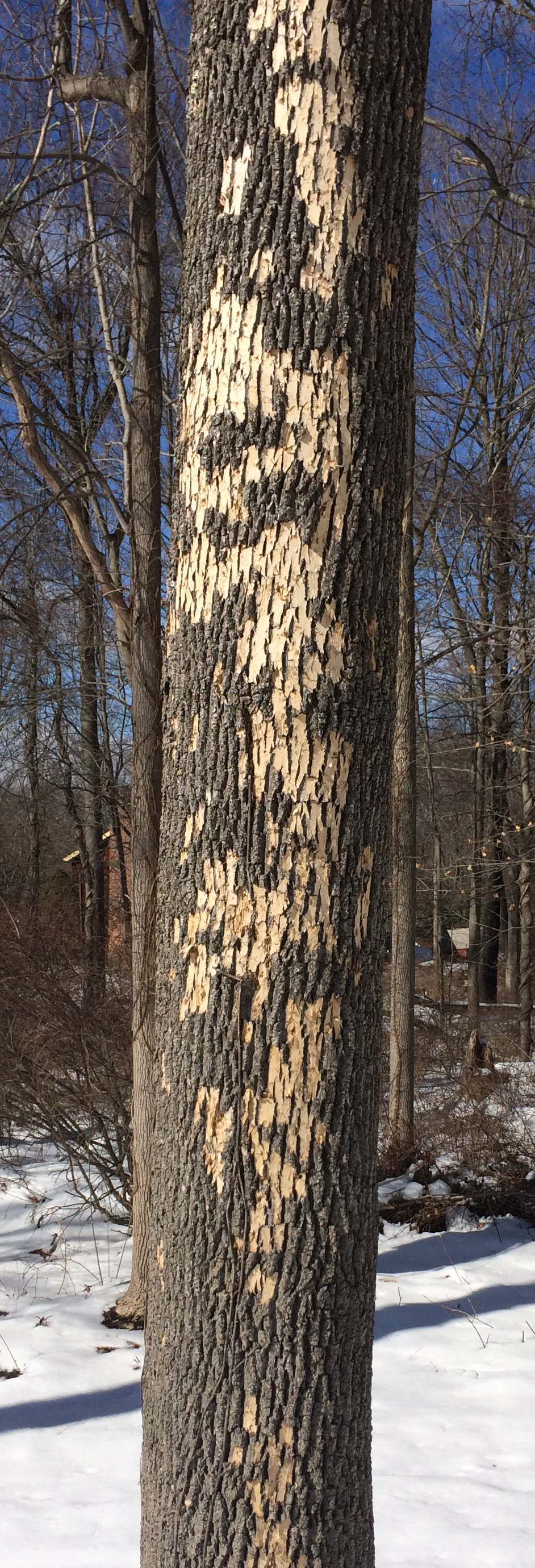
The Emerald Ash Borer has been ravaging ash trees for years in the Midwest. But now it’s here, in Fairfield County, having worked its way east, both by flying from tree to tree and catching rides on firewood being transported longer distances. They are killing trees at an alarming rate.
There is probably an Ash tree in your yard or on your neighbors property. Connecticut’s woods, forests and urban areas are made up of 4-20% Ash species.

The highway department is always taking down hazardous trees on town property, primarily along town roads. But the number of ash trees dying is exploding as this insect kills trees.
According to Redding Tree Warden Sean McNamara, thousands of trees on both public and private property will need to be removed over the next few years, including 200 trees that were removed from Putnam Park in 2015.
In his blog, called the Redding Gardener, McNamara has covered this topic extensively. Thank you to Mr. McNamara for much of the information in this article.
As the name suggests, the Emerald Ash Borer is a boring insect. The eggs are deposited into the trunk of an ash tree. When the larvae hatches, it drills its way into the cambium of the tree and tunnels serpentine trails of destruction through the living portion of the tree. Eventually, this damage cuts off the flow of water and nutrients from the roots to the leaves. The tree will rapidly weaken and then suddenly die.

Here is an example of an ash tree on Umpawaug Road. Woodpeckers are stripping off the bark to get to the EAB larvae. The trees not only die, they become very unstable quickly.
McNamara described what to look for: “The larvae stage of the tree is a very attractive meal for woodpeckers. They will pick away at the bark of the tree, turning it from a silver grey to bright tan color. This “blonding” effect is a sure sign your tree is being destroyed from inside by EAB. If you see blonding on your ash tree you should make plans to have the tree removed. Once dead the tree will rapidly degrade and become a hazard.” He added, “Trees should be taken down responsibly before they become a serious hazard, particularly if they have the potential to land on buildings, cars, play areas and public roadways.”
“I expect in the next ten years most, if not all, ash trees will be gone from our local landscape. It is sad to lose this tree that is well known for its value as firewood and baseball bats.”
As of August 29, 2013, in an effort to control the spread, Connecticut extended a quarantine over four counties to regulate the movement of firewood. By slowing the spread it buys time for effective controls to emerge, such as naturally arising or introduced biological agents (insects or diseases) that attack EAB.
If you have an Ash Tree that still looks healthy or is only minimally infested, there is hope. Treat with a systemic insecticide that is absorbed through the root system of the tree and protects the tree from borer damage. A tree care company is your best bet for this service.
Buy your firewood from a licensed arborist. They will have inspected the wood to make sure EAB are not present
Learn the Signs of Infestation: Examine trees on your property and on your favorite woodland paths. Adults begin emerging from within ash trees around the middle of June, with emergence continuing for about 5 weeks. The adult then lays eggs in the bark of ash trees. In 7-10 days, the larval stage of the insect hatches from an egg and “bores,” or tunnels, through the cambium of the tree. The tunnels restrict or cut off the flow of water and nutrients from the ash tree roots and leaves.

The Emerald Ash Borer’s serpentine trails of destruction.
Depending on the extent of the damage, a tree can quickly succumb to the injury caused by the EAB larvae. Look under the bark of an infested tree you will see light colored serpentine galleries. These are the bore tracks of the EAB larvae. You may also find small D-shaped holes in the bark where the adult exited the tree.
Woodpeckers will sometimes attack the larvae of EAB. If you notice woodpecker activity or see flacking of the outer most bark from woodpecker activity you may have bores below the trunk.
Report any suspected finds to the CT Agricultural Experiment Station at 203-974-8474. The CT Dept. of Energy & Environmental Protection (DEEP) website provides in depth information and photos: www.ct.gov/deep/eab
Our Tree Warden wants the public to check their property for ash trees, especially those that could hit their house or fall into the roadway. They should consult with an Arborist and decide if they should take these trees down now before they become a hazard.
Read more here:
Emerald Ash Borer Quarantine, Redding Gardener
Invasion of the Emerald Ash Borer, Redding Gardener
The Slow Storm: Tree Mortality in CT from Invasive Insect Pests, UCONN College of Agriculture, Health and Natural Resources
200 Trees To Be Felled In Redding’s Putnam Park Before Bug Infection Hits, Trumbull-Monroe Daily Voice


Recent Comments